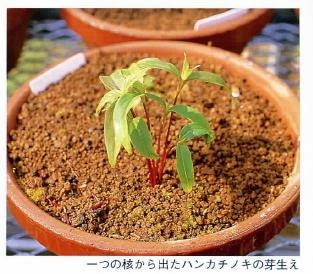Gomphrena globosa
 |
| 2007年7月 |
一方,欧州に渡来した明確な年を示した文献は見出せなかった.しかし,コスモスやヒャクニチソウより約一世紀早く17世紀末には,インドから来た植物としていくつかの植物誌・植物図譜に取り上げられている.学名をつけたリンネもインド産としていて(Blog-3),熱帯アジアでは早くから広く分布していたのであろう.
英国には 1715 年に渡来したとされており,日本への渡来は英国より早く,欧州大陸とほぼ同時期ということになる.
8
Descourtilz, M. E.,“Flore
médicale des Antilles ”, vol. 5 t. 320 (1827)
“Flore médicale des Antilles ,
ou, Traité des plantes usuelles :des colonies Françaises, Anglaises, Espagnoles
et Portugaises /par M. E. Descourtilz ; peinte par J. Th. Descourtilz.”
AMARANTHINE GLOBULEUSE.( Rafraîchissante
aqueuse.)
Physical characteristics: This species is the prettiest of this kind;
stems are high with a foot and a half straight, articulated, a little hairy,
leafy, sometimes simple, and usually lined with twigs courts, opposing, uneven
and axillary; its leaves are opposite, ovate, lanceolate, entire, green, soft
and pubescent. The flowers are born on top of the stem and branches, arranged
in globular head, including the base has two opposite and sessile bracts. These
flower heads appear dry and arid to touch: they are bright purple, which makes
them stronger nice to see.
Chemical analysis.: The flowers provide color carmine coloring
material I have in vain tried to fix a little resin, mucilage (粘液) and gum.
Medicinal properties. I do not have a lot
of comments on this plant which seems rather pleasant than useful; I need only
say that it enjoys the reputation Colonial refreshing plants.
デクルタルの図版は見出せた古い図譜の中で,唯一中南米で観察されたセンニチチコウを写生した図である.他は全てインド及びその周辺,または欧州の庭園で見られたものの図.有用性としてはその美しさで人々を慰めるだけで,化学分析も行ったが,樹脂と粘液しか検出できなかったとしている.
デクルタル(ミッシェル・エチエンヌ,Michel Étienne Descourtilz, 1775 –1835)はフランス生まれの医師・植物学者でハイチ革命*を目撃した歴史家.母国で医学修行を終えた1799年に,北米大西洋岸南部を経由して,当時フランスの植民地であったアンティレス諸島のハイチに到着.外科医師であり Toussaint Louverture** のパスポートを持っていたにもかかわらず,革命の際,何度か命の危険にさらされた.彼の植物標本は主にPort-au-Prince と Cap-Haïtien の間,及びArtibonite 川の流域で採集された.彼の自然史の全てのコレクション及び多くの図はハイチ革命の際に失われた.1803年にフランスに戻り,Beaumont
の医師として働き,またパリのリンネ協会の会長を務めた.この,アンティレスの薬用植物の図を描いたのは息子のJean-Theodore Descourtilz (1796 –1855) で,彼はパリで1834年に出版したブラジルの鳥類図譜
“Oiseaux brillant du Bresil” でよく知られている.
*ハイチ革命(仏:Révolution
haïtienne, 1791年 - 1804年)は、西半球で起こったアフリカ人奴隷の反乱の中でも最も成功した革命。これにより、自由黒人の共和国としてハイチが建国された。革命が起こった時、ハイチはサン=ドマングと呼ばれるフランスの植民地であった。この革命によって、アフリカ人とアフリカ人を先祖に持つ人々がフランスの植民地統治から解放されただけでなく、奴隷状態からも解放された。奴隷が世界中で使われていた時代に多くの奴隷の反乱が起こったが、サン=ドマングの反乱だけが成功し、全土を恒久的に解放できた。(from J. Wiki)
**トゥーサン・ルーヴェルチュール, フランス革命期のハイチの独立運動指導者(from J. Wiki)
**トゥーサン・ルーヴェルチュール, フランス革命期のハイチの独立運動指導者(from J. Wiki)
9 “Curtis’s
Botanical Magazine”, vol. 55 [ser. 2, vol. 2] t. 2815 (1828)
GOMPHRENA GLOBOSA. ANNUAL GLOBE
Introduced into Britain
from the East Indies so long ago as the year
1714, and extensively cultivated as a favourite ornamental plant in the gardens
of the rich, and in the windows of the poor cottagers ; yet so far neglected by
the Botanist, that it has not been honoured with a figure in any British
publication that has come within my observation. The structure and colour and
texture of the flowers when accurately examined are highly beautiful, but, like
those of the Class SYNGENESIA, require nicety and care in the dissection and
analysis. The generic name is altered from Gromphena (γραφω, to paint) which PLINY applied to the
Three-Coloured, or Painted Amaranth, a plant naturally allied to this. Both
possess floral coverings of that peculiarly dry and imperishable nature as to
have merited the name of Everlasting, and hence they are considered in many
countries as the emblems of friendship. In the East Indies
the common Globe-flower is formed into garlands to ornament the hair, and to
adorn instruments of music at the festivals : and in the South of Europe, for
the plant is now cultivated in almost every part of the world, churches are
decorated with it in the winter.
As a tender annual, the GOMPHRENA globosa
requires to be raised in a hot-bed, and planted out during the summer.
現在でも刊行されていて,最も歴史が長い植物図譜,カーチスの Botanical Magazine (創刊,1787)には,「英国へは 1714 年に東インドから導入され,それ以降お金持ちの庭師の庭園や,貧しい人の出窓では装飾植物として好まれていたが,あまり英国の出版物では尊重されていなかった.学名はプレニウスのハゲイトウに由来する.どちらも永久花として永くその美しさを保つ事から多くの国で友情の象徴としてエンブレムの図案とされる.また,東インドでは髪を飾る花輪や祭りの楽器の装飾に用いられる.現在最もこの花の栽培が盛んな南ヨーロッパでは冬の間教会を飾る.英国では温床に種を蒔き夏に戸外に出す」とある.
10 Wight,
R., “Icones Plantarum Indiae Orientalis”, vol. 5(2) t. 1784 (1846)
1784. Gomphrena globosa (Linn.), (中略)
Cultivated every where, and known under the
English name of Batchelor's buttons, now quite a weed in many gardens.
This plant, properly speaking, does not
merit a place in a work on Indian Botany, as it is certainly not indigenous to
India, but it seemed desirable to introduce a plant so generally known and by
most persons supposed a native; the more so, as it differs so widely in its
generic characters from all the Indian genera of the order. Here the filaments
are united into a tube with the staminodes, exceeding in length the style and
deeply-cleft stigma. In other respects it is a true member of the family.
ロバート・ワイト (Robert
Wight, 1796–1872) はスコットランド生まれの外科医で植物学者.1819-1853年の30年以上をインドで過ごした.マドラスの植物園の園長を務め, Rungiah と Govindooなど,現地の画家に身近な植物の絵を描かせた.スコットランドに帰国後,1856 年に自ら学んだ石版画の技法でその絵を用いて 6 巻の『東インドの植物画譜Icones
Plantarum Indiae Orientalis (Illustrations of the plants of Eastern India) 』にまとめて出版した.この書の中でセンニチコウは,独身者のボタンとあだ名があり,多くの庭で野生化していて,ここが原産地と誤解されている.インドの植物相の中では特に取り上げる価値はないとされている.
11 Step,
E., Bois, D., “Favourite flowers of garden and greenhouse”, vol. 3, t. 232
(1897)
GLOBE AMARANTHS
History.
The best known species of Gomphrena is the
pretty annual, G. globosa, which was introduced from India Brazil
編集者:EDWARD STEP,
F.L.S. and WILLIAM WATSON F.R.H.S.
画家:D. BOIS
Assistant de la Chaire de Culture au Museum d'Histoire Naturelle de Paris,
このマガジンは一部3シリング6ペンスという当時高価な価格で計13部が隔週発行され,全部で316枚の図譜が掲載されている.全て腊葉ではなく,生きている植物から D Bois が直接描いた絵は,生き生きとした生命力に富んでいる.ビクトリア時代に歓迎されたこれらの園芸植物は輝かしく彩色され,アラビアゴムでハイライトされている.縮尺も示され,解剖図が付されている図譜もおおく,テキストはかなり長文で学術的な評価も高い.この叢書には,ヤマユリ,ミセバヤ,ツバキなど日本由来の花も多く描かれている.著者は収載した植物の選択基準を, “plants which
give brilliance and charm to the garden.”といっている.
%2B%5BJ.T.%2BDescourtilz%5D.jpg)
%2B%5BW.J.%2BHooker%5D.jpg)
%2B%5BD.G.J.M.%2BBois%5D.jpg)

.jpg)

.jpg)



.JPG)
.jpg)










